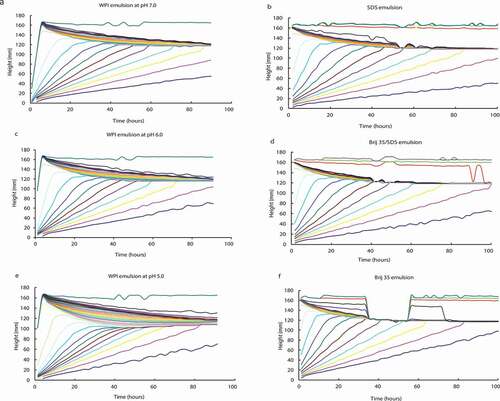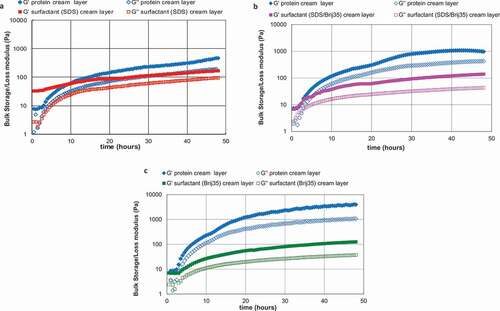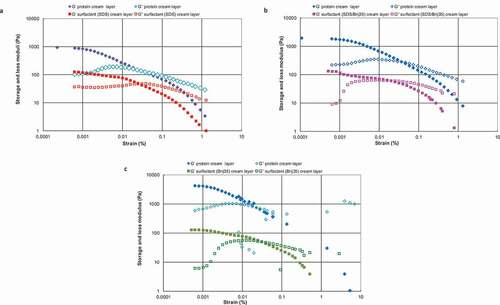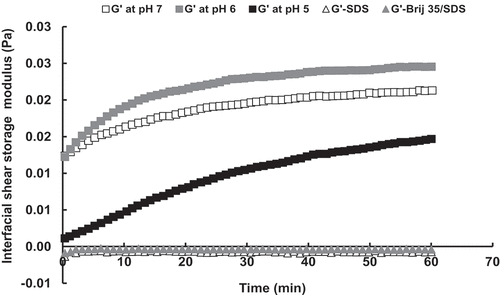Figures & data
Table 1. Droplet size distribution and zeta potential measurements for the emulsions systems (protein-and surfactant-stabilised emulsions) studied.
Figure 1. Dispersed phase volume as a function of height within protein-stabilised emulsions at pH 7.0 (a), pH 6.0 (c), and pH 5.0 (e) and within surfactant-stabilised emulsions with SDS (b), Brij 35/SDS (40:60) (d), and Brij 35 (f). Each line represents a set of measurements taken 60 min apart over 40 h. The arrows indicate the progression with time.

Figure 2. Dispersed phase volume contour plots of height as a function of time for protein-stabilised emulsions at pH 7.0 (a), pH 6.0 (c), and pH 5.0 (e) and surfactant-stabilised emulsions with SDS (b), Brij 35/SDS (40:60) (d), and Brij 35 (f).

Figure 3. Bulk storage (large square symbols) and loss (small square symbols) moduli for creaming emulsions stabilised with WPI at pH 7.0 (a), pH 6.0 (b), and pH 5.0 (c) and with their counterpart surfactant emulsions: SDS (a), Brij 35/SDS (b), and Brij 35 (c).



